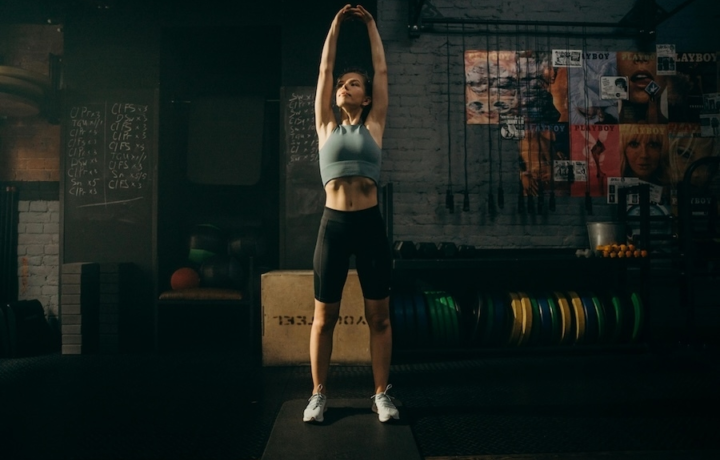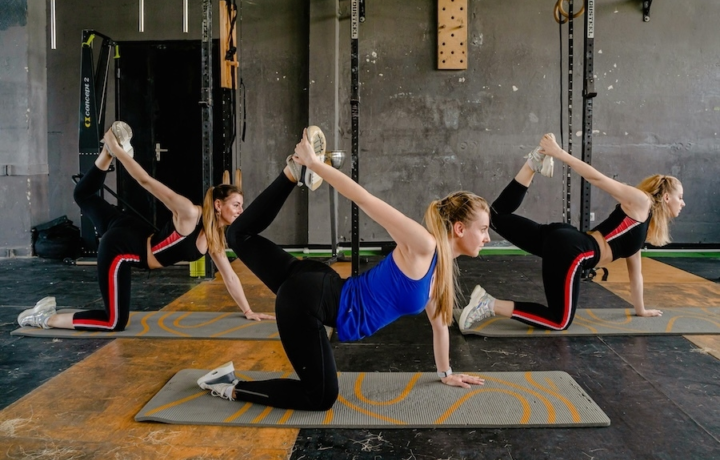Exercise
Standing Wall Calf Stretch

Standing Wall Calf Stretch
How to Perform
- Stand facing a wall at arm's length distance, placing your palms flat against the wall at shoulder height.
- Position your feet hip-width apart with one foot stepped back about 2-3 feet, keeping both heels on the ground.
- Bend your front knee slightly while keeping your back leg completely straight with the heel pressed firmly into the floor.
- Lean your body weight forward by pressing into the wall until you feel a stretch in the calf muscle of your back leg.
- Keep your back heel down and your back leg straight throughout the entire stretch, maintaining a neutral spine position.
- Breathe deeply and slowly while holding the stretch, inhaling through your nose and exhaling through your mouth.
- Hold this position for 20-30 seconds, focusing on relaxing into the stretch with each exhale.
- Switch legs and repeat the process, ensuring equal time on both sides for balanced flexibility development.
Important information
- Make sure your back heel remains firmly planted on the ground throughout the stretch to target the calf muscles effectively.
- Keep your back leg completely straight to stretch the gastrocnemius (upper calf), or slightly bend it to target the soleus (lower calf).
- Avoid bouncing or forcing the stretch beyond comfortable tension, as this may lead to muscle strain.
- If you experience any sharp pain (rather than the normal stretching sensation), reduce the intensity or consult with a fitness professional.

Standing Wall Calf Stretch
Exercise Details
Primary Muscles
Muscle Groups
Mechanic
Built for progress
Take the guesswork out of training
Create personalized AI-powered workout plans that evolve with you. Train smarter, track every rep and keep moving forward, one workout at a time.






The Standing Wall Calf Stretch is a fundamental mobility exercise that serves as an excellent addition to any fitness routine, particularly for beginners looking to improve lower leg flexibility. This accessible stretch specifically targets the gastrocnemius and soleus muscles: collectively known as the calves, which often become tight from daily activities like walking, running, and even sitting for prolonged periods with feet in a flexed position. As a versatile recovery technique, this stretch can be seamlessly incorporated into your cool-down routine to help alleviate muscle tension after a workout. The gentle, sustained pressure helps to release lactic acid buildup and promotes better circulation to the working muscles, potentially reducing post-exercise soreness. Equally valuable as a warm-up element, the Standing Wall Calf Stretch prepares the lower legs for more intense activity by increasing tissue temperature and enhancing range of motion.
The beauty of this stretch lies in its simplicity and effectiveness. By creating a controlled lengthening of the calf muscles, it addresses one of the most commonly tight areas in the body. Regular practice can contribute to improved ankle mobility, which translates to better performance in squats, lunges, and various athletic movements. For runners and walkers, maintaining flexible calves can help prevent overuse injuries such as Achilles tendinitis and plantar fasciitis. This stretch represents a perfect balance between stretching and mobility work: while it certainly elongates the muscle tissue for greater flexibility, it simultaneously improves the functional range of motion at the ankle joint. This dual benefit makes it particularly valuable for those with desk jobs or anyone who experiences calf tightness from daily activities.
Whether you're an exercise novice or simply looking to maintain healthy tissue quality in your lower legs, the Standing Wall Calf Stretch offers an accessible, equipment-free option that delivers significant benefits with minimal time investment. Its gentle nature makes it appropriate for nearly all fitness levels and ages.
FAQ - Standing Wall Calf Stretch
Hold the stretch for 20-30 seconds per leg, repeating 2-3 times on each side. For chronic tightness, you can extend this to 45-60 seconds per stretch to allow the muscle fibers to fully release.
Yes, but with caution. Use a gentler angle and stop if you feel pain rather than just tension. This stretch can actually help with recovery from Achilles issues, but consult your physical therapist for personalized guidance.
Aim to perform this stretch daily, especially if you're active or sit for long periods. At minimum, include it in your post-workout routine 3-4 times weekly to maintain calf flexibility and ankle mobility.
With a straight knee, you primarily target the gastrocnemius (upper calf muscle). By slightly bending the back knee, you shift the focus to the soleus (lower calf muscle). For complete calf flexibility, perform the stretch both ways.
The most common errors include shrugging your shoulders toward your ears, overarching your lower back to compensate for limited shoulder mobility, and stretching too aggressively. Focus on quality over intensity, keep your core engaged to protect your spine, and remember that consistent, gentle stretching yields better results than occasional forceful attempts.







